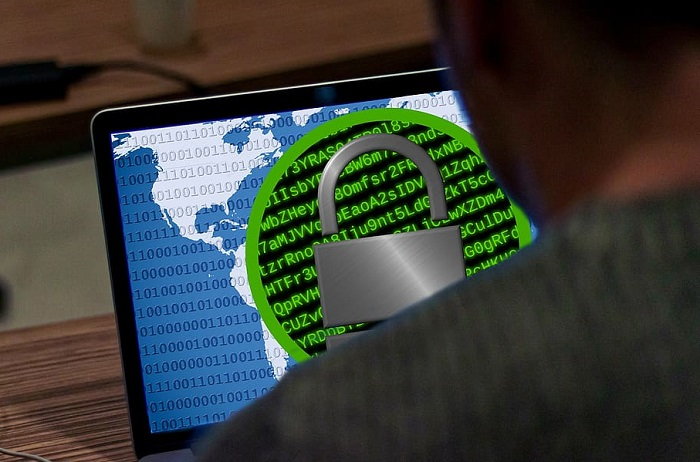Unfortunately, with the development of Internet technologies and computer equipment, cyber-attacks have also developed dramatically. In February, the cybersecurity experts from Malwarebytes have published computer infection statistics for 2019. Data were collected among users of the same antivirus for macOS and Windows. The results were surprising for the avid users of Mac, which is considered virtually virus-free.

Statistics showed a peculiar tendency. If, in 2018, one computer with an installed antivirus software accounted for an average of 4.8 attacks annually, then in 2019, this figure increased by 2.3 times. It is almost twice as much as cyber-attacks on Windows — this system has an average index of 5.8.
The report notes that the likely reason lies in the growing popularity of Apple computers and laptops – and therefore, the increased interest of cybercriminals in macOS. Researchers believe that, for the present, the most prevalent cyber-threats to Mac users are adware and other potentially unwanted programs.
It is a pressing problem, as more and more owners of the macOS equipped devices want to learn how to remove spyware and other malicious software from their MacBooks and iMacs. Although the security level of the Apple’s operating system is still very high, it makes sense to take specific measures to protect yourself from becoming a victim of cyber-attacks.
Contents
How to Prevent Cyber-Threats on Your Mac
We have come up with a list of helpful recommendations for enhancing the security of your Mac.
Method 1 – Create an Account without Administrator Rights
Your account, which is set up in macOS by default, has administrator rights, and producers of malicious software can use this to infect your device.

It is advisable to create an account without administrator rights for daily use while resorting to the administrator account only when it is necessary. To create a new account, select “Users and groups” in the system settings menu, then create an account without administrator rights.
You may use it for common tasks of everyday life, such as reading emails and Internet surfing. It will allow you to minimize the damage that the latest cyber-threats can cause.
Method 2 – Go Online Using a “Sandbox” Browser Only
It is better to choose the Google Chrome browser instead of the built-in Apple Safari browser. There are several reasons for that. Firstly, Google Chrome is updated regularly. Secondly, it has its own embedded “sandbox.” And thirdly, it comes with the Flash Player version, which also features a “sandbox” function. All of that puts a serious barrier to cybercriminals.
Also, the browser from Google contains a mechanism for automatic updates without the user’s participation, saving the latter from having to install patches manually to cover vulnerabilities. Make sure that Google Chrome is installed as the default browser on your device.
Method 3 – Use a Reliable Password Manager
Unlike Windows-based laptops and computers, MacBooks and iMacs have an integrated Keychain password manager. Try to create unique, tamper-resistant, complex passwords for accessing resources whenever possible and store them in the password manager, instead of creating passwords that are easy to guess.

If hackers get a hold of a password to at least one of your accounts, they will instantly try to apply it to all the other accounts, including electronic mail, social media, e-wallets, and online stores. Therefore, using unique secure passwords increases your protection several times.
Method 4 – Update Your Operating System As Soon As Patches Are Released
The prevailing majority of recent cyber-attacks on macOS-powered devices take advantage of the vulnerabilities in old or outdated computer software. The most widespread are exploits for vulnerabilities in Microsoft Office, Adobe Reader, Java, and some other programs.
That is why it is preferable to use the latest version of the application and not the older one. That is why if you are still using previous versions of various software for Mac, ensure to update them all as soon as possible. Do not miss regular upgrades of the programs installed on your iMac or MacBook.
Method 5 – Install Data Protection Software
To protect your Mac, we recommend installing specialized antivirus software. The users of macOS have access to a great variety of free and paid antivirus programs, which can boast a large number of useful features that are not limited only to detecting and removing viruses and malware.

If you follow the above-stated tips, update your software on time, and ensure to be prepared for cyber-attacks, your chances of becoming a victim of hackers will decrease to zero.






![DNS_Probe_Finished_No_Internet Error [RESOLVED] Fix DNS_Probe_Finished_No_Internet Error](https://howandwow.info/wp-content/uploads/2019/09/Fix-DNS_Probe_Finished_No_Internet-Error.jpg)
![Err_Connection_Reset Error in Chrome [RESOLVED] Fix Err_Connection_Reset Error in Google Chrome](https://howandwow.info/wp-content/uploads/2019/09/Fix-Err_Connection_Reset-Error-in-Google-Chrome.jpg)
![Err_Cache_Miss in Google Chrome Error [RESOLVED] Err_Cache_Miss in Google Chrome Error](https://howandwow.info/wp-content/uploads/2019/08/How-to-Fix-Confirm-Form-Resubmission-Error.jpg)









![Steam Missing File Privileges Error [RESOLVED] How to Fix Steam Missing File Privileges](https://howandwow.info/wp-content/uploads/2020/07/How-to-Fix-Steam-Missing-File-Privileges-Error-100x70.jpg)
![SIM Not Provisioned MM#2 Error [RESOLVED] SIM Not Provisioned MM#2](https://howandwow.info/wp-content/uploads/2020/03/SIM-Not-Provisioned-MM2.jpg)








